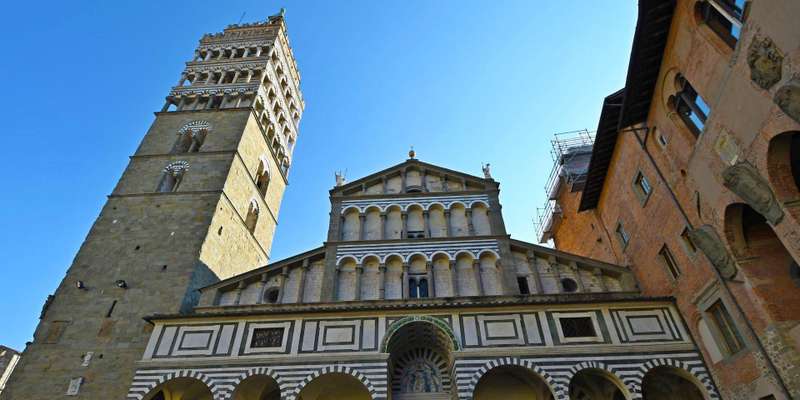- Home
- Useful Tips
- Guided visit to Pistoia's...
Pistoia's historic palaces are among Tuscany's best-kept secrets, yet most visitors miss their hidden courtyards and frescoed halls due to confusing access rules and limited English information. Over 60% of day-trippers to this medieval city spend less than 15 minutes at each landmark, frustrated by unclear opening hours or unaware of the artistic treasures inside. The Palazzo dei Vescovi's 12th-century underground vaults and Palazzo Comunale's secret magistrate chambers require local knowledge to fully appreciate. Without guidance, you risk overlooking intricate Romanesque details or wasting precious vacation time deciphering Italian-only signage. These architectural masterpieces tell stories of medieval banking dynasties and papal intrigue – narratives that remain locked away for travelers who lack insider context.


Decoding palace opening hours without the headache
Pistoia's palaces operate on notoriously complex schedules, with some closing for midday riposo while others open only for guided groups. The Palazzo del Tau, for instance, requires advance registration for its stunning Giuliano da Sangallo courtyard, while Palazzo Fabroni alternates between contemporary art exhibitions and historic room viewings. Locals know the golden window is 10am-12:30pm when all major palaces overlap their visiting hours. Watch for small 'orario continuato' signs indicating rare all-day openings, particularly on weekends when private palazzi occasionally unlock their gates. Church-affiliated buildings like Palazzo dei Vescovi often close unexpectedly for religious events, so check the diocesan bulletin board near the cathedral for last-minute changes.
Navigating palace interiors like an architecture expert
Beyond their imposing facades, Pistoia's palaces reveal their true magic in spatial details most visitors miss. The triple-height loggia of Palazzo Pretorio wasn't just decorative – it allowed medieval judges to conduct outdoor hearings. Look for 'banchi' stone benches where notaries once drafted contracts, and ceiling beams carved with merchant marks in Palazzo Panciatichi. Local guides emphasize studying stairwells: the spiral staircase in Palazzo Bracciolini showcases how Renaissance architects balanced aesthetics with defensive needs. Don't overlook basement kitchens with their original copper pots or rooftop loggias designed for summer entertaining. Pro tip: the best-preserved Renaissance interiors are often upstairs, where noble families retreated from public view – push past ground-level ticket areas to discover these time capsules.
Secret spots even guidebooks miss
Several of Pistoia's most fascinating palace features aren't marked on any maps. The Palazzo Comunale hides a medieval prison cell behind what appears to be a decorative wall panel in the Sala Maggiore. In Palazzo dei Vescovi, a little-known underground passage leads to the cathedral's excavated Roman foundations. Locals whisper about Palazzo Rospigliosi's 'secret garden' accessible only by asking guards politely after noon. For the ultimate hidden gem, visit Palazzo Buontalenti's third-floor archive room where 16th-century sketches of unbuilt palace expansions are displayed in rotating exhibits. These discoveries transform a standard palace visit into an architectural treasure hunt, rewarding those who know where to look beyond the obvious highlights.
Staying near Pistoia's palace district without overspending
Sleeping within the medieval center puts you steps from illuminated palaces at night, when their facades take on a magical glow. Avoid tourist-heavy piazza hotels by targeting converted noble residences like Palazzo 42, where former guest chambers now function as boutique rooms. For budget-conscious travelers, the Ostello di Pistoia occupies a 14th-century palazzo annex with original vaulted ceilings at hostel prices. Early risers gain free access to palace courtyards before crowds arrive – particularly rewarding at Palazzo del Podestà where morning light filters through its heraldic windows. Those driving should note the ZTL (traffic-limited zone) exemptions offered by some central hotels, solving the typical parking nightmare near these protected historic sites.
